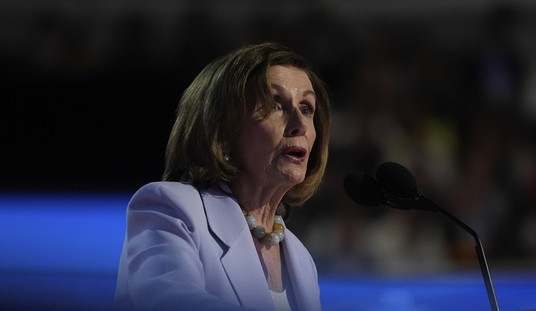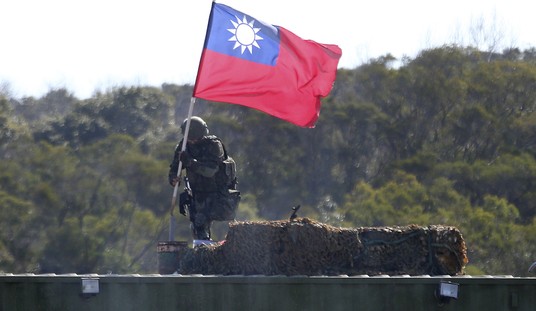Sometime in the not-to0-distant future there will be meetings of the various law enforcement agencies involved in the hunt for the Boston terrorists. They will look at what worked and what didn’t, and what the terrorists did and how they might have been stopped earlier. And sometime later down the pike, there will be an after action report, a written product of these discussions that will enable the shared experiences to serve as a learning module for future counterterrorism operations.
Somewhere in the Islamic world, terrorists will be undergoing the same exercise, but for different reasons: to obstruct and defeat the kind of operation they saw in Boston. Terrorists of all varieties study and learn from operations precisely as do law enforcement agencies. Terrorists have been known to study not only methods and operations but also the key personalities likely to be involved in counterterrorism.
There are numerous examples of this, but the most memorable, at least from my personal experiences, comes from a conversation I had some years ago in Evian, France, with Dick Mulder, who at the time was the chief hostage negotiator for the Dutch government. A psychiatrist by training, Mulder had developed a series of procedures that resulted in a high rate of terrorist capitulation by immersing them in a ritualized psychodrama, not entirely unlike procedures developed in the U.S. by the NYPD. Like most hostage negotiators, Mulder’s goal was for everyone, including the terrorists, to walk out alive.
During the opening of one of these negotiations with South Moluccan terrorists, Mulder repeated his introductory line, “I am the negotiator for the Dutch government.” To his shock and dismay, the hostage taker on the other end of the field telephone came back with, “Oh, Dr. Mulder, you have been expected.” Mulder’s identity was practically a state secret, but the terrorists knew who he was. And that, of course, meant that they knew his methods.
This situation did not lead to the usual capitulation but to an assault by Dutch marines and a loss of life. By doing their homework, terrorists had neutralized Mulder’s methods, leaving military engagement as the government’s only option.
Terrorists are too often mistakenly seen as imitative, but terrorists are pragmatic, flexible, and highly innovative. Part of that innovation comes from studying the methods of our law enforcement the same way law enforcement examines its own operations and the methods terrorists use.
One of the most obvious components of the Boston operation was the way in which the police mobilized ordinary citizens as an extension of the eyes and ears of the police. The British used this technique in hunting IRA bombers and keeping mass events safe. “Adopt a Bobby,” British subjects were told at major events. And that is precisely what the British did; and by so doing, they extended the reach of the police.
But recently, the Muslim American Civil Liberties Coalition and organizations at the City University of New York Law School warned American Muslims not to cooperate with law enforcement. This sentiment has been affirmed by the American Civil Liberties Union, which has made an issue of police surveillance of radical mosques and Muslim neighborhoods, surveillance that is both legal and imperative in light of the attacks by radical Muslims against Americans since 9/11.
What if Dzhokar Tsarnaev had followed the tactic long used by both guerrilla fighters and terrorists and swam in the sea of the people, his people? What if he had hidden in a Muslim neighborhood or a college neighborhood inhabited by sympathetic leftists, the kind who find convicted bomber and Weather Underground terrorist Kathy Boudin an intellectual asset worthy of holding a faculty position at Columbia? Would one of these terrorist sympathizers have picked up the phone to call police and tell them that the object of their manhunt was hiding in his boat? And who among the brothers’ family and roommates picked up the phone and identified them? That’s right, not one of them.
Dzhokar Tsarnaev, a wounded nineteen-year-old man on the run, brought a major American metropolis to a grinding halt, siphoning billions out of the economy, spreading fear, and bringing normal police work to a virtual halt. What if the next terrorist attack is undertaken by more than one action group, hitting multiple targets simultaneously? You don’t even have to imagine the ensuing chaos. You can examine it. The Hanafi Muslims did exactly that in March, 1977 in Washington, D.C. They struck three targets simultaneously: the DC municipal offices, the Islamic Center, and the headquarters of Bnai Brith, the Jewish fraternal organization. They brought the city to a standstill and overwhelmed a police force unprepared in both tactics and armaments for that kind of confrontation. President Jimmy Carter refused to provide armed federal resources for fear of taking responsibility when the predicted mass killings would start. He left the D.C. police largely to fend for itself. Fortunately, the predicted mass killings did not occur.
Future Islamist terrorists can take comfort in the reluctance of both the media and the president to blame the culture of Islamic extremism. The media uttered the words “Chechyna,” “Chechens,” and even “Russia,” endlessly. Only sporadically were the words”Islam” or “Muslim” heard over the airwaves. As a Russian friend of mine said, Chechens are not Russians. No one should make that confusion, especially not after the horror and brutality Chechen terrorists inflicted on Russian school children at Beslan.
In the aftermath, President Obama, once again, showed us he is too tied to Muslims to tell the truth about the threat of Islamic fundamentalism. The administration that gave us “workplace violence” as a cynical and insulting explanation for the Fort Hood massacre gave us a lecture on the strengths of multi-culturalism and diversity in creating a resilient American society. Yet, it was Bostonians’ forebears, those that did not just yearn to come to America but also to be Americans, who showed us what courage in the face of evil looks like. The Tsarnaevs yearned to come to America to escape a brutal war and then the parents went back to Dagestam , leaving their children here. They later killed in the name of a vision of Islam that refuses not only assimilation but even basic acculturation.
It is considered racism, Islamophobia, or worse to say publicly what nearly every American thought privately: the names of the terrorists were not going to be Tom, Dick, and Harry, despite the fantasies of MSNBC’s Chris Matthews, NPR’s Dina Temple-Raston, CNN’s Erin Burnett, and Salon’s David Sirota, who was rooting for the return of Timothy McVeigh. Future Islamist terrorists can take comfort in this continual denial by America’s media elite of the reality of the threat. Screaming “Islamophobia” will persist as a way to avoid the scrutiny of law enforcement and the suspicions of some of our citizenry, while engaging the protection of CAIR.
It is doubtful, given the political correctness of an administration that refuses to use the words “Islamic terrorism,” that the after action report will be any different from the “workplace violence” idiocy of the military’s investigation into the Fort Hood massacre. The Tsarnaev brothers will be found to have been alienated youth, unable to fit in because of the barriers erected by an inherently racist society — or because of some other form of liberal “bullshit,” as Bill Maher so aptly put it, masquerading as compassionate insight.
Uninhibited by political correctness, the terrorists will focus on the vulnerabilities of the infidels and how to exploit their nonsensical multi-culturalism. Tactically they will learn how to avoid surveillance cameras, create better escape plans, precipitate multiple and simultaneous operations, and find a compliant and encouraging population in whose waters they can swim. They will think about how to recruit other Tsarnaev brothers.
We speak of the impact of a culture of poverty on the social condition. We speak of a culture of racism and its deleterious impact on our African American population. We speak of culture in numerous contexts, but it is impossible to speak of the relationship between the culture of Islam and terrorist violence. How many more people have to die before our analysis of the threats that face us confronts recognition that, history aside, violence and terror are no longer equal manifestations of all religions? Jihad, for many, might simply mean internal struggle, but for others, it also means holy war sanctioned by theological doctrine. We can ignore the former, but we will not survive if we ignore the latter.









Join the conversation as a VIP Member